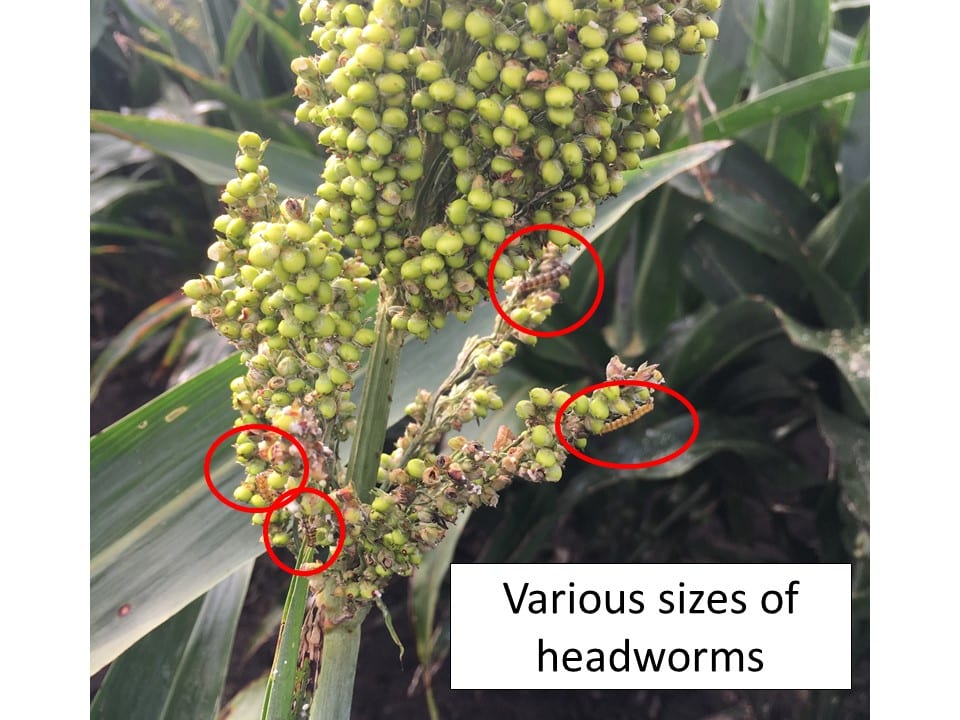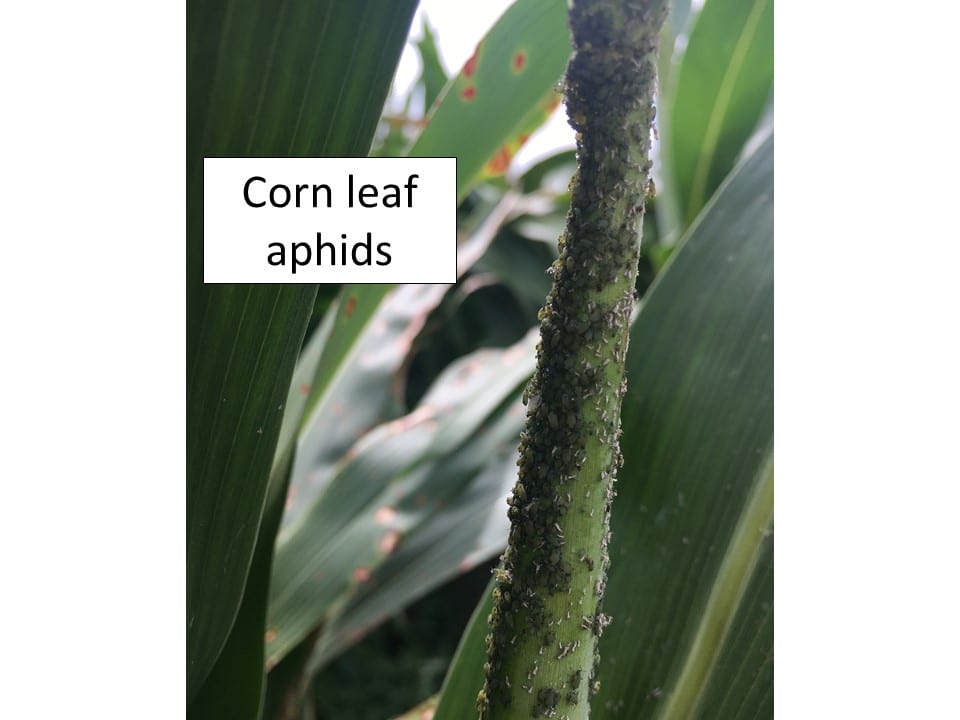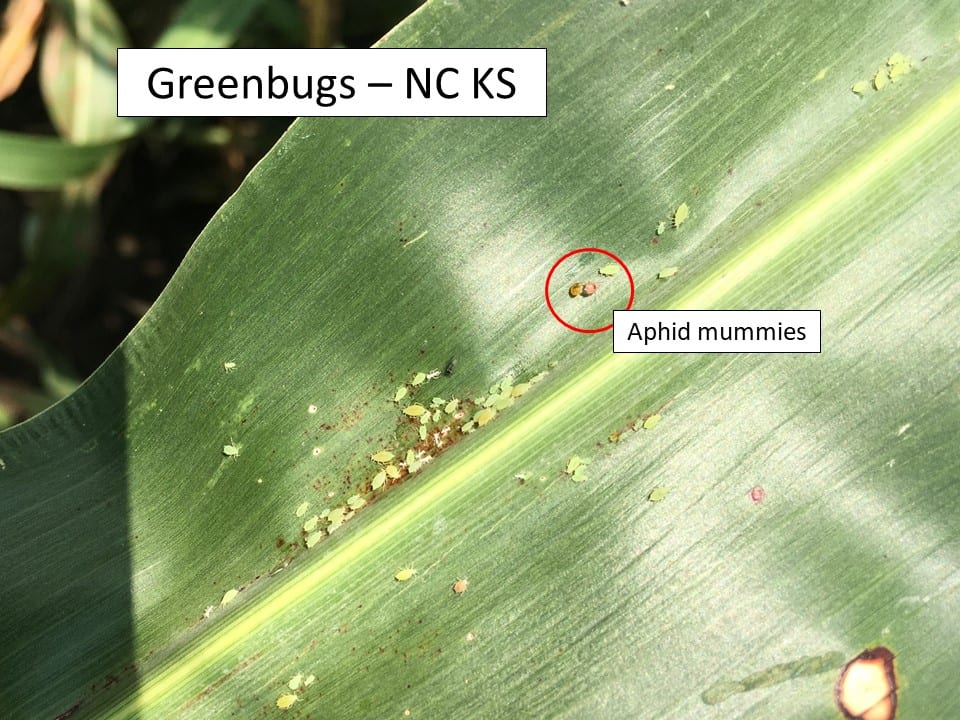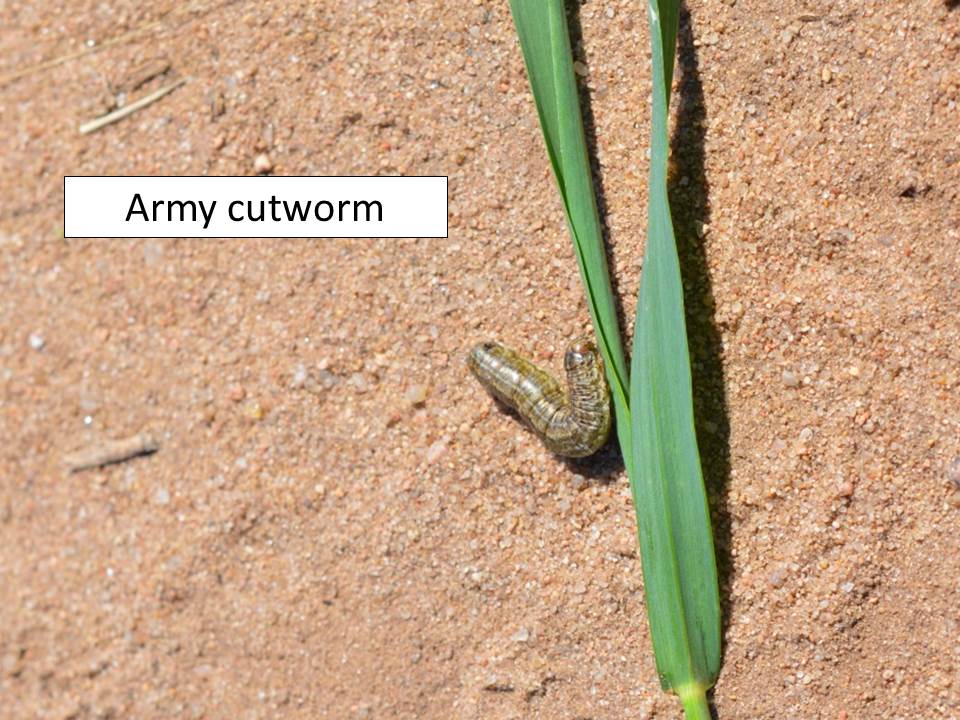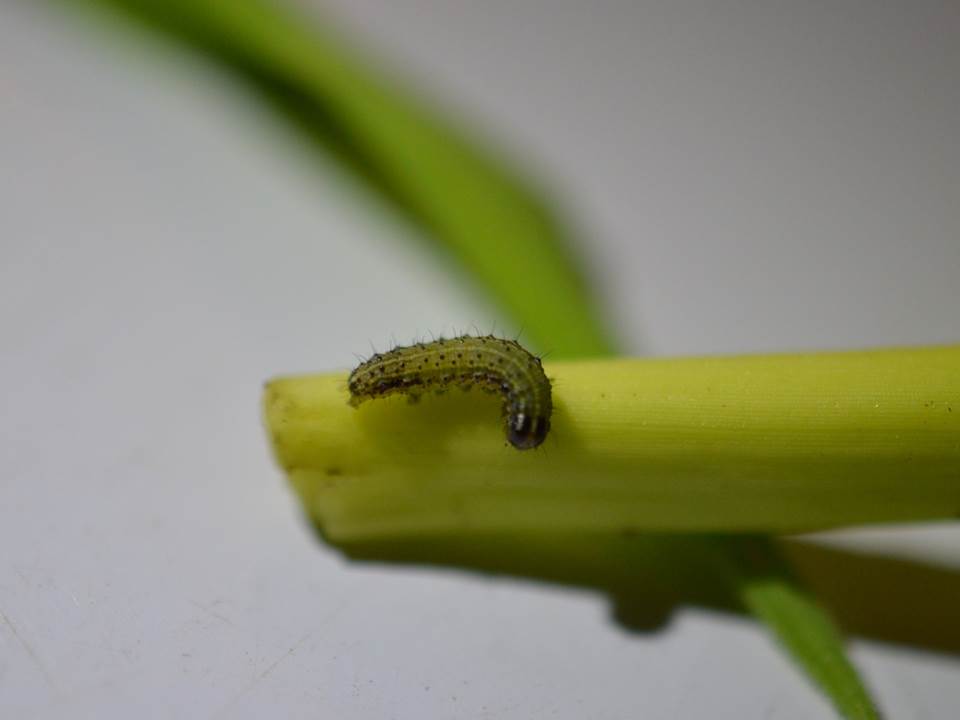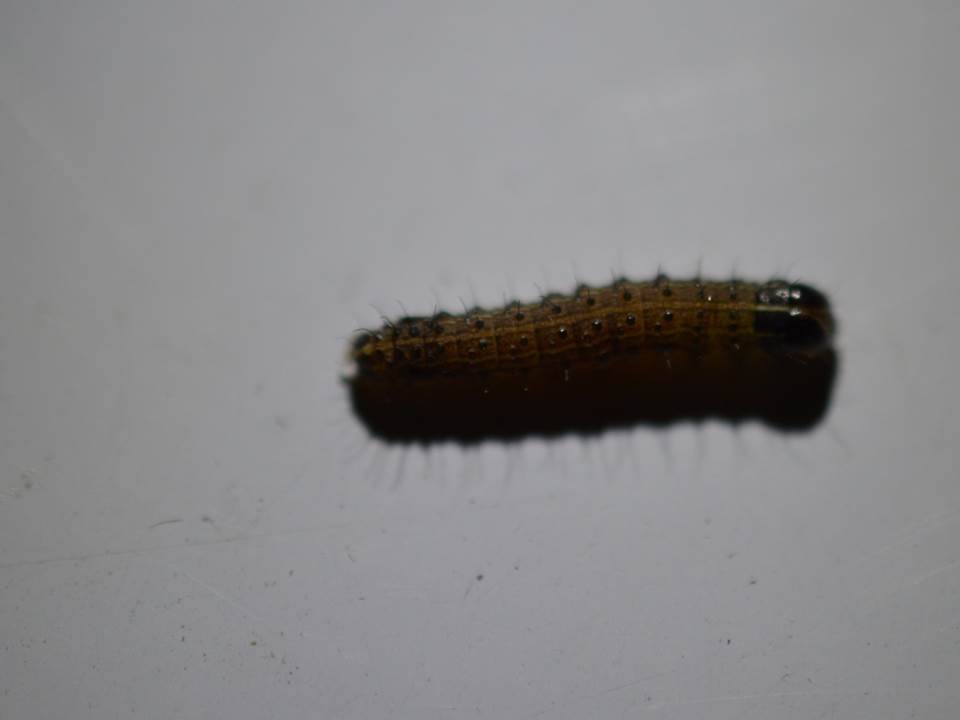–by Dr. Jeff Whitworth and Dr. Holly Schwarting
Where wheat has emerged, fields need to be checked for fall armyworms, armyworms, and army cutworms. If you see worms on your wheat this fall, the first thing to do is to determine which worm is present. Proper identification is important because they have different feeding and overwintering patterns.
We have been hearing about and seeing a mixture of both armyworms and fall armyworms on wheat and other host plants this fall. These small worms start by causing small “windowpanes” in wheat or alfalfa. No army cutworm infestations have been verified yet on wheat.

Flocks of birds in wheat or alfalfa fields in fall or early spring are often indicative of a “worm” infestation as the birds are feeding on the larvae. Fields with 25-30% of the plants showing “windowpane” feeding need to be monitored frequently as these larvae consume more as they get larger. Treatment should be applied before stands become threatened.
Fall armyworms
When scouting fields for fall armyworm damage, look for “windowpane” injury caused by tiny larvae chewing on seedling leaves. Each individual field should be scouted in several locations, including the field margins and the interior. The larvae themselves are usually too small to be easily observed after they first hatch, and hide in or around the base of seedlings. Within a few days of hatching, the larvae become large enough to destroy entire leaves.
The suggested treatment threshold is 2-3 actively feeding larvae per linear foot of row in wheat. Fields with 25 to 30 percent of plants with windowpane injury should be re-examined daily and treated immediately if stand establishment appears threatened. Larvae increase in size at an exponential rate, and so do their food requirements. Later instars do the most damage, sometimes destroying entire stands, and are the least susceptible to insecticides. Without treatment, problems can continue until larvae reach maturity or until a killing frost. Thin strands of wheat are especially at risk.

Fall armyworms will feed until the temperatures cool into the mid-20’s or they pupate, whichever comes first. If a killing frost does not occur soon after the treatment threshold is reached, fields may require chemical treatment.
Armyworms
Armyworm larvae are green to black with stripes of various colors. The head capsule is medium brown with dark markings. Most damage to wheat in Kansas occurs in southern and eastern areas of the state during warm, moist periods from late April to early June rather than in the fall. Like fall armyworms, armyworms will feed until the temperatures cool in the mid-20’s or they pupate, whichever comes first.

Most armyworm damage occurs during the last three to five days of larval feeding. When leaf feeding is observed, look for larvae curled up on the ground under litter, especially in patches of lodged plants. Treatment is usually not necessary below levels of four or five larvae per foot, but is probably justified at infestations of five to eight per foot depending upon larval maturity in relation to crop maturity.
Army cutworm
The army cutworm is a late fall /early spring pest in Kansas. Leaf damage by early stage army cutworm larvae looks very similar to that of fall armyworms. However, army cutworm larvae are typically very small in the early fall – smaller than fall armyworms or armyworms. If the worms causing defoliation in wheat in the fall are relatively large, ½ inch or more, they are probably armyworms and/or fall armyworms.
Adult moths lay eggs in soil in the fall. The brown, faintly striped larvae hatch during the fall and early winter. They will feed throughout the winter (unlike armyworm and fall armyworm larvae), burrowing in the soil to escape frost and emerging again to feed during sp

Unlike other cutworms, only above ground plant parts are consumed, giving plants the appearance of being grazed by cattle.
Infestations in well-established stands will probably not require insecticide applications while wheat is dormant, but some fields never green up in the spring because of cutworm feeding. Along with fall scouting, frequent inspections during warm periods in February, March, and early April are strongly encouraged, particularly when preceded by a dry fall.
Moisture availability, crop condition, and regrowth potential are all factors influencing potential losses to this pest. Late-planted fields under dry conditions with poor tillering may suffer economic damage with as few as one or two larvae per square foot.
In most fields, treatment will not be necessary until populations average four to five worms per square foot. Vigorous, well-tillered fields under optimal growing conditions can tolerate even higher populations, as many as nine or 10 larvae per square foot, without measurable yield loss. Infestations in later stages of crop development are less damaging than early ones because established plants can compensate for considerable defoliation and larvae normally finish feeding before wheat enters reproductive stages.
Mixed populations
Mostly the same insecticides are registered for control of these species of worms, but higher rates are recommended for fall armyworm. Any fields with mixed populations should be treated with the fall armyworm rate.
For treatment options, please refer to the latest K-State Wheat Insect Management Guide 2017 at: http://www.bookstore.ksre.ksu.edu/pubs/mf745.pdf


